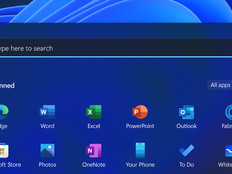Shifting Repetitive Processes Away from Human Workers
The abrupt shutdown of campuses in response to the pandemic was a reminder that institutions must be agile and prepared for a variety of potential crises. One advantage to automating certain services is that they may be able to continue working, even when humans cannot; for instance, after a natural disaster strikes campus.
In Orem, Utah, Utah Valley University uses automated chatbots to answer questions on topics ranging from financial aid to admissions. These types of solutions reduce staff workload and allow for continuity whether operations are remote, in person or both.
Other key areas for automation include registrar and advising activities, scheduling, grades and administration.
Automating responses to routine student requests in Canvas, for example, makes it easy for a professor to simply approve or deny the request in the system. Then, the system either triggers the appropriate email to the student or moves the workflow process along to the next person for approval. For faculty, timesavers like these can be immense, especially as they work to adapt to online instruction.
“Several of our faculty are making intelligent use of automated grading so that they can reinvest their time and exercise focus on improving learning outcomes,” says John Hale, the chairperson of computer science and a professor of bioinformatics and computational biology at the University of Tulsa.
DISCOVER: These strategies can help scale and secure digital workflows.
With Automated Systems, Data Collection Is More Efficient
Beyond day-to-day workflow improvements, automated systems bring another major benefit, Hale notes: the ability to easily gather data that, in turn, can be analyzed to improve operations even further.
“I would say the major benefits are more time-efficient processes that allow you to reinvest that time and energy on what matters most, and insights and intelligence that are afforded due to analysis over data gathered from automated processes,” he says.
That second benefit supports that data-driven decision-making that is intrinsic to digital transformation.
“It begins with automation motivated by improving an individual workflow, but the real prize is quite possibly the knowledge you can extract when data across multiple automation solutions are linked,” says Hale.
With the right systems and software in place, institutions can modernize outdated and tedious processes and, in their place, deliver a faster, more user-friendly experience for students, faculty and staff.
MORE ON EDTECH: See how automation helps universities balance security and privacy.











